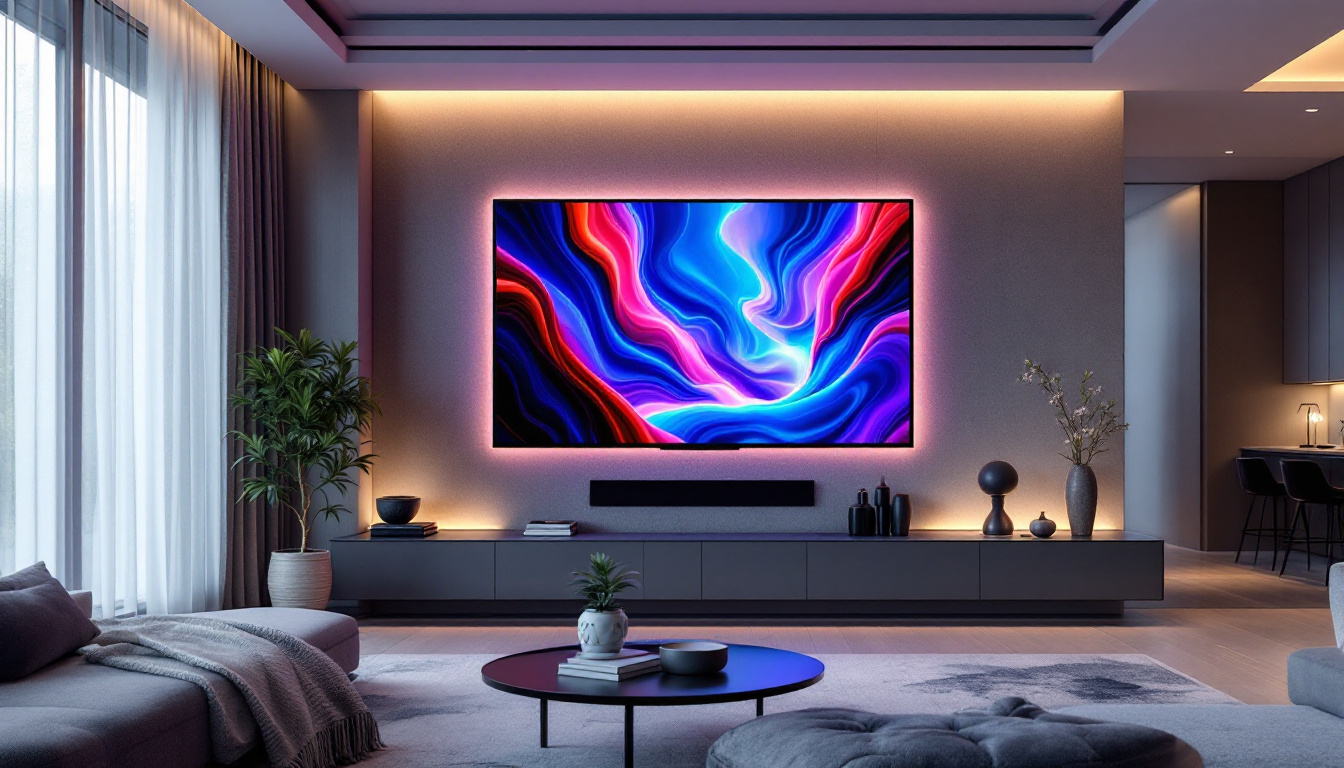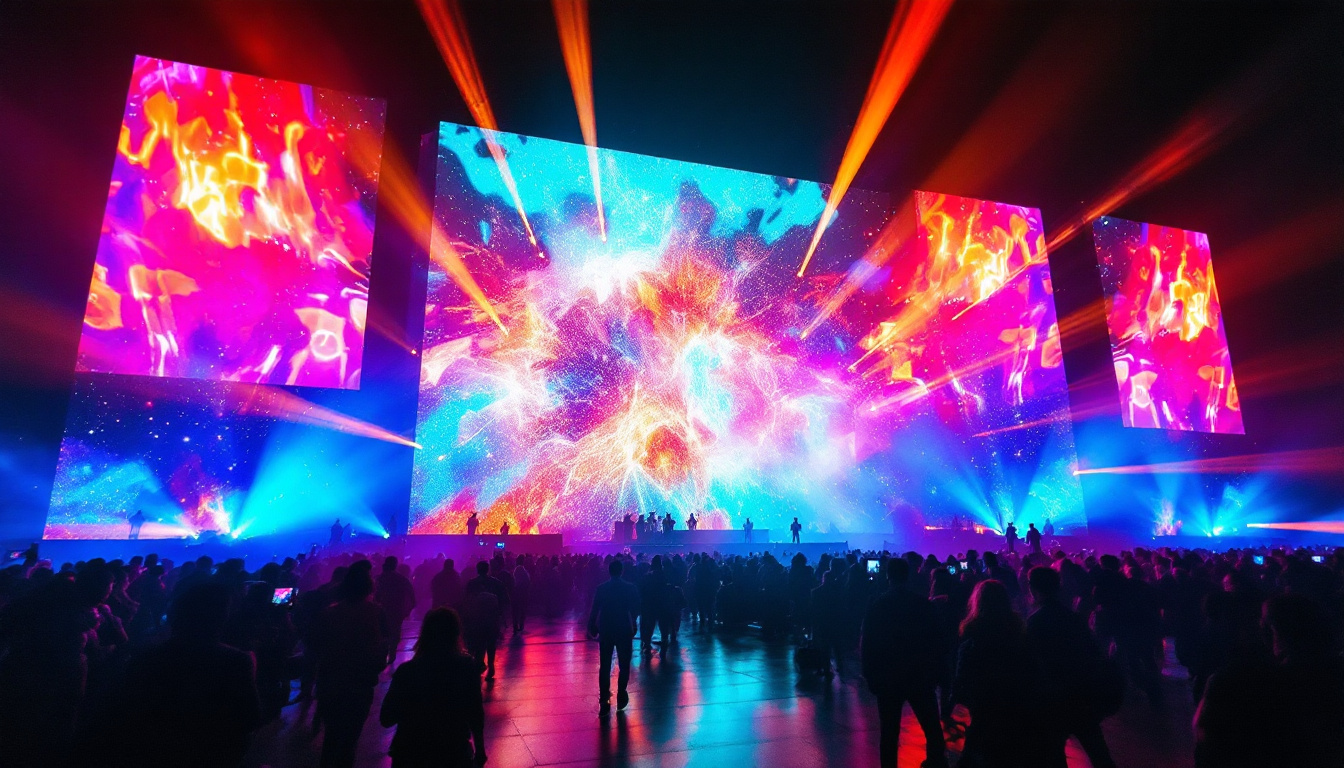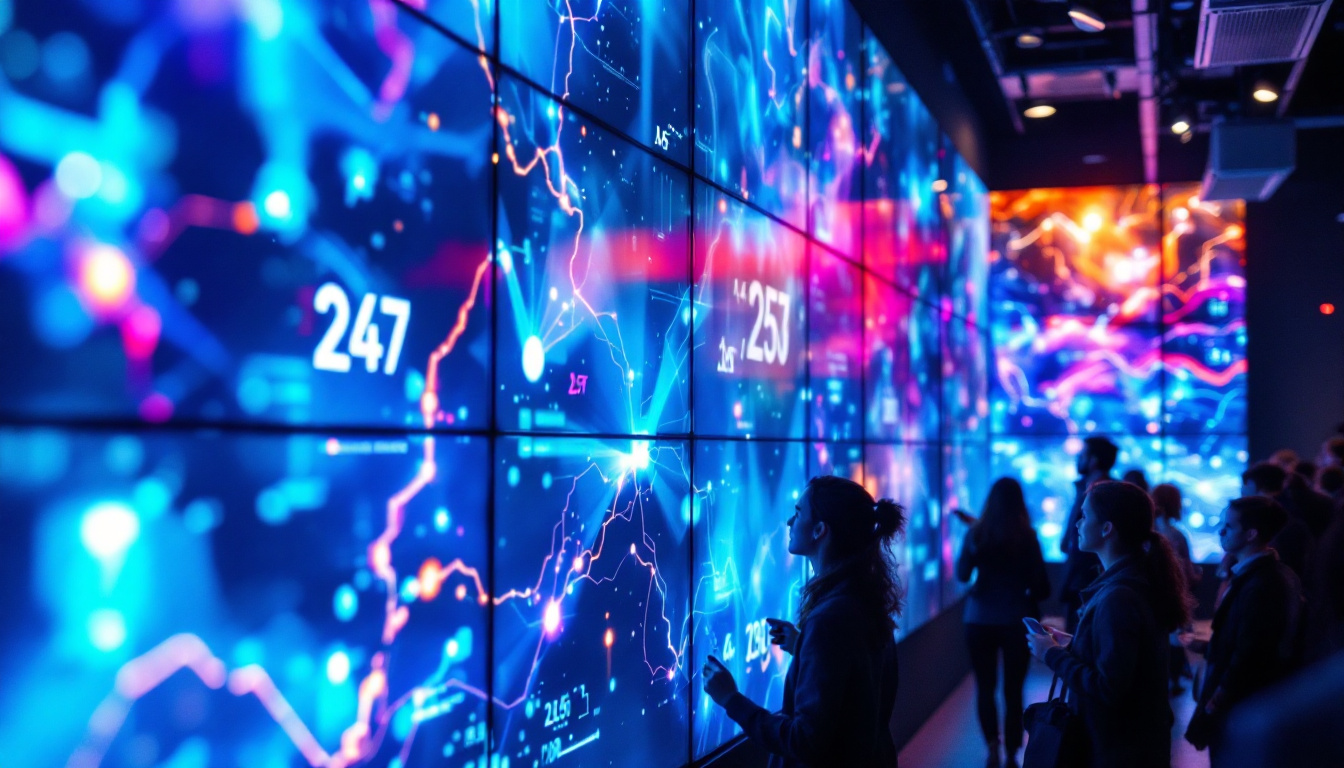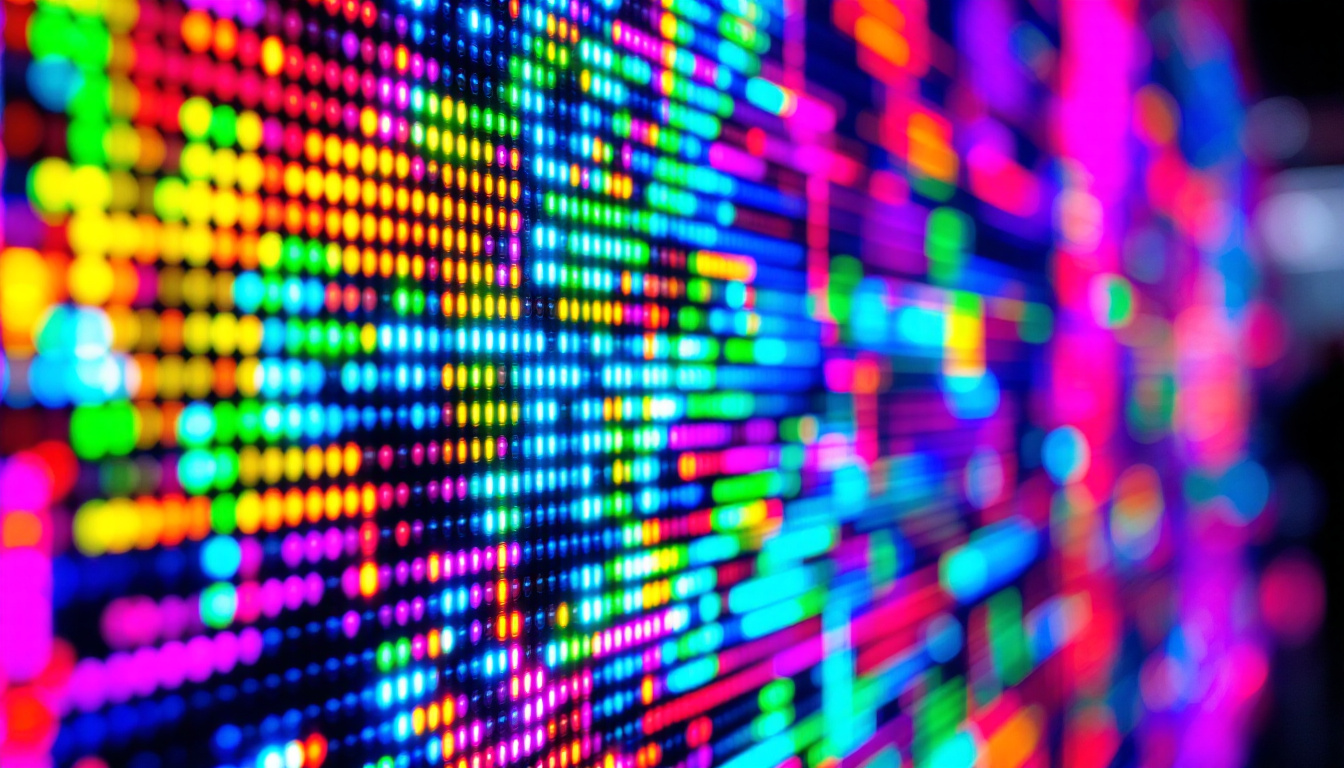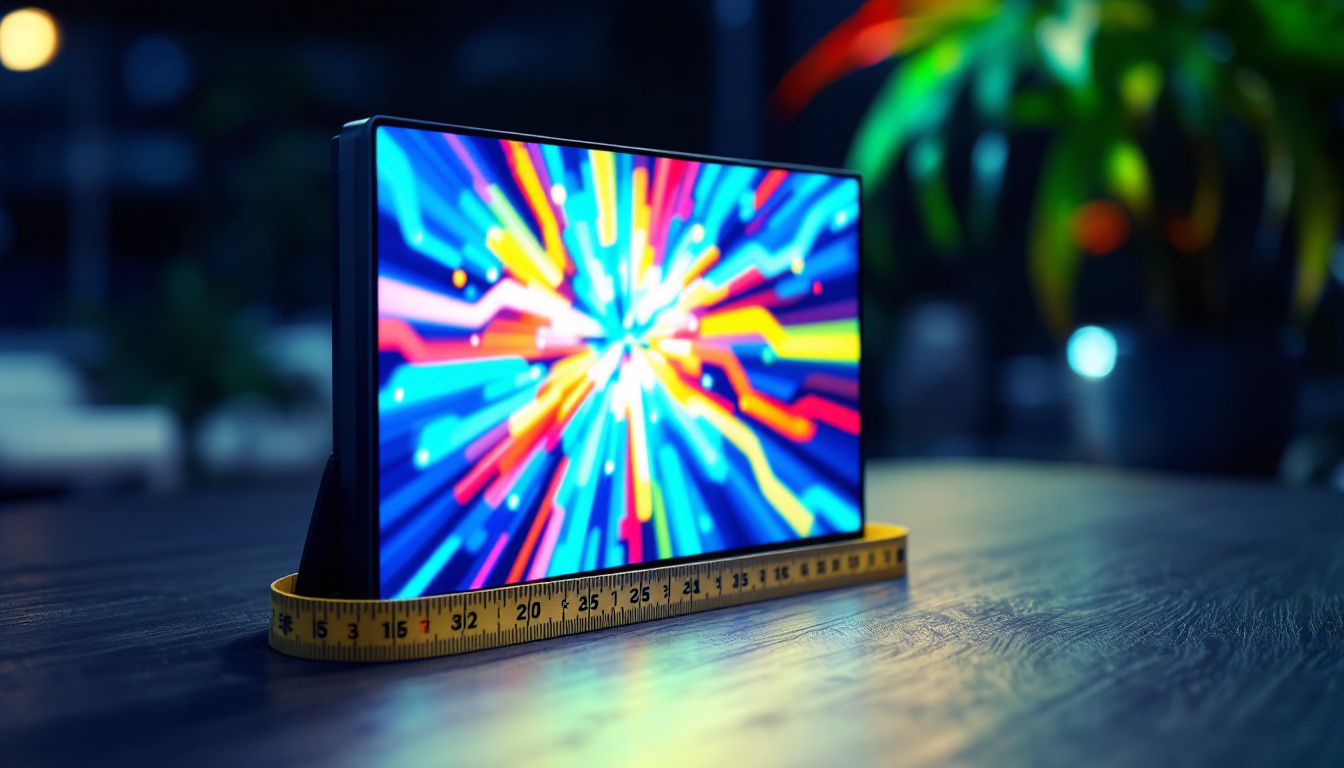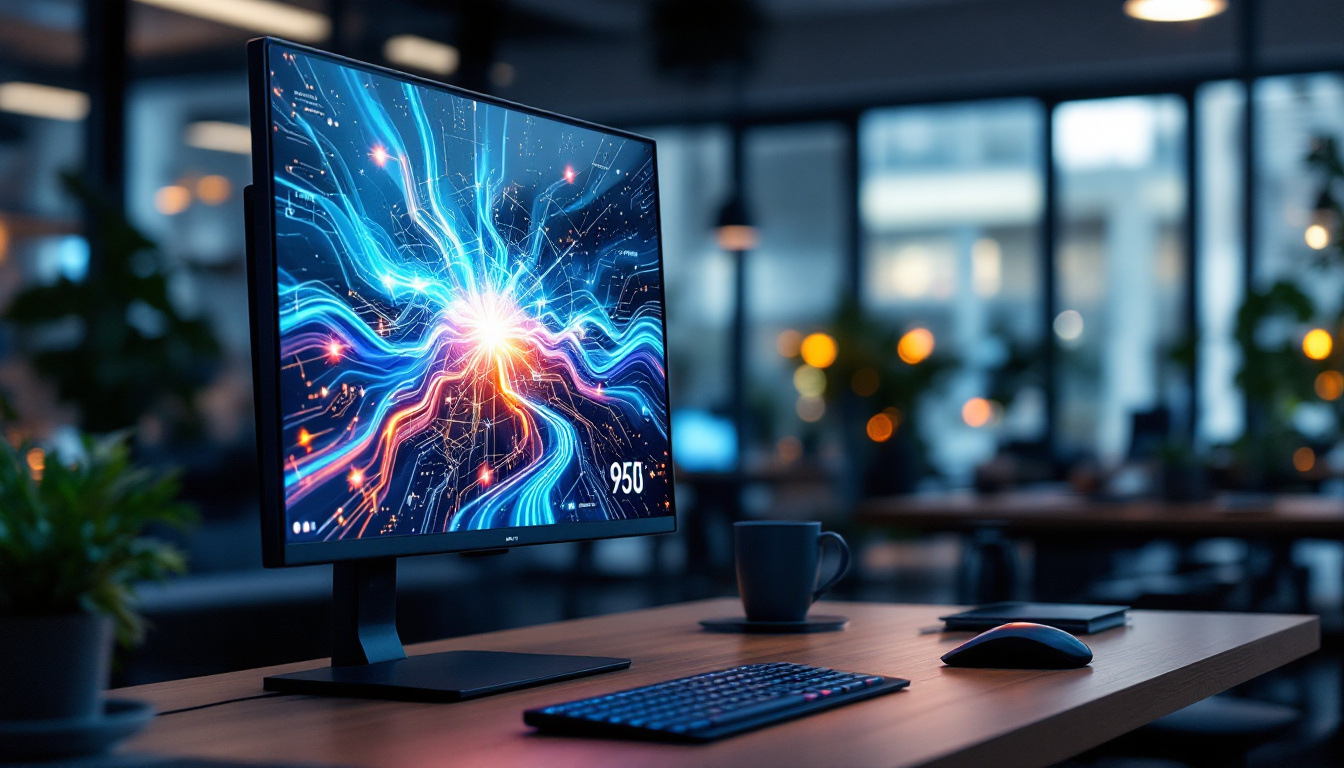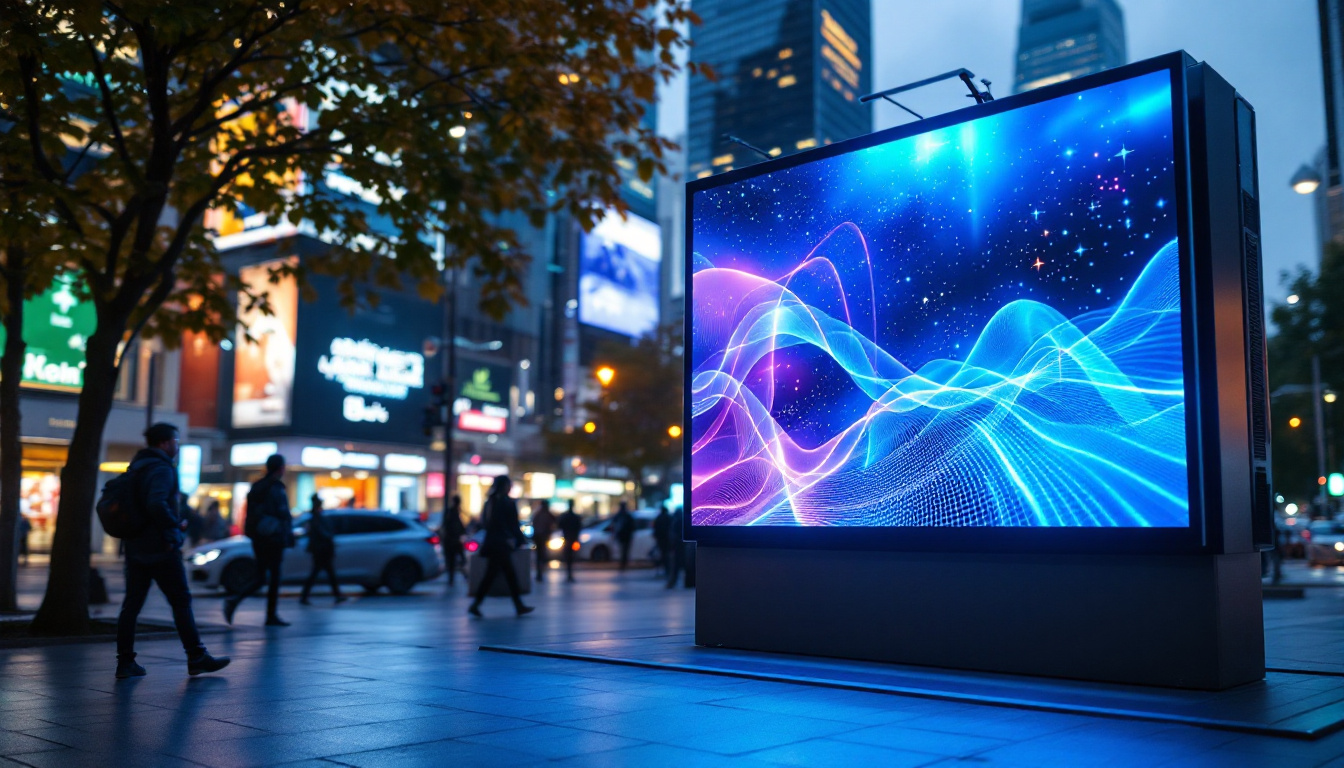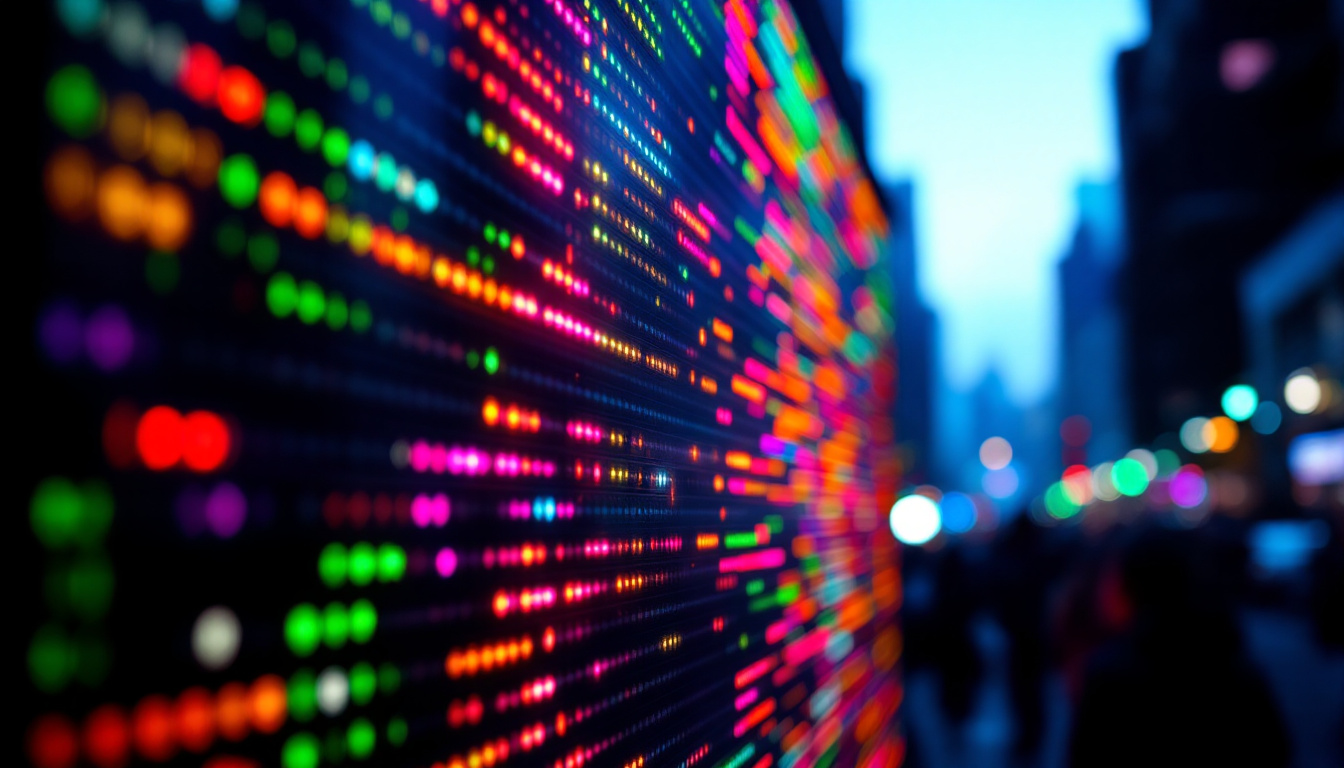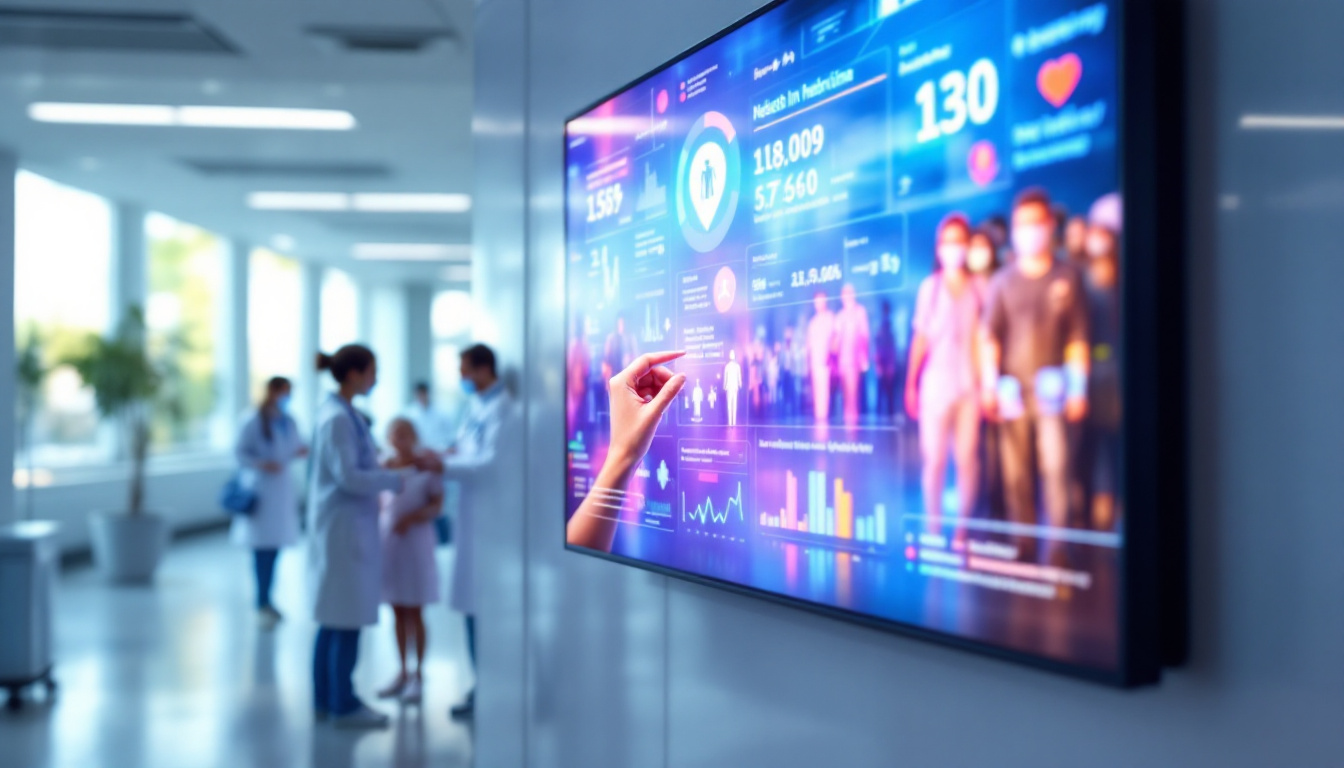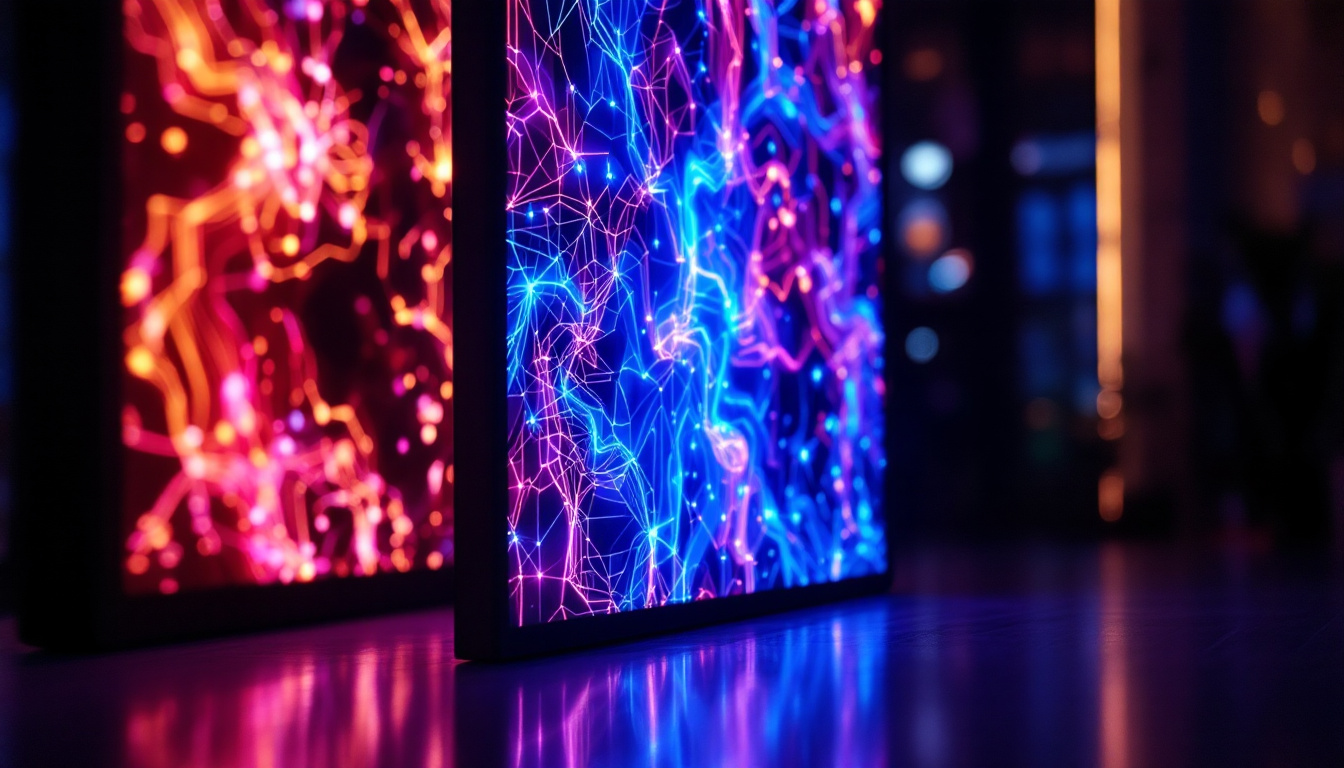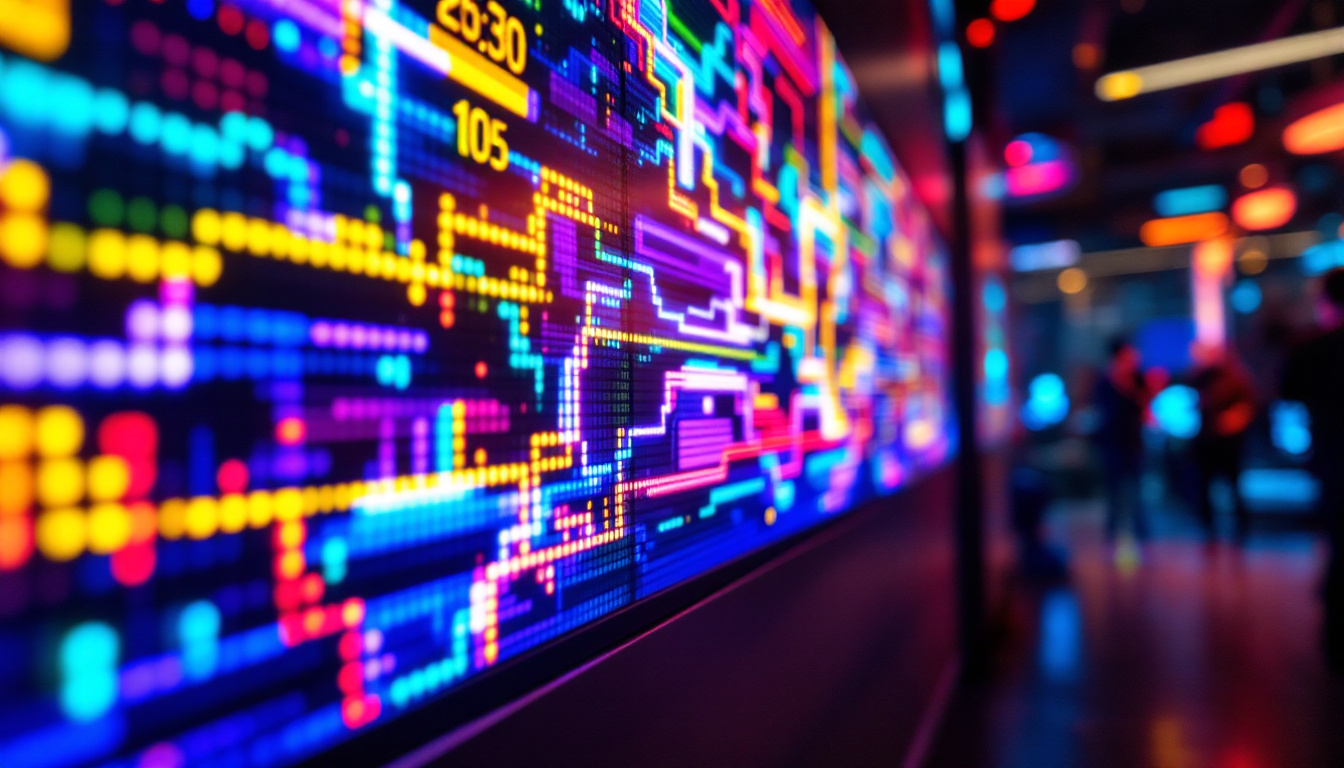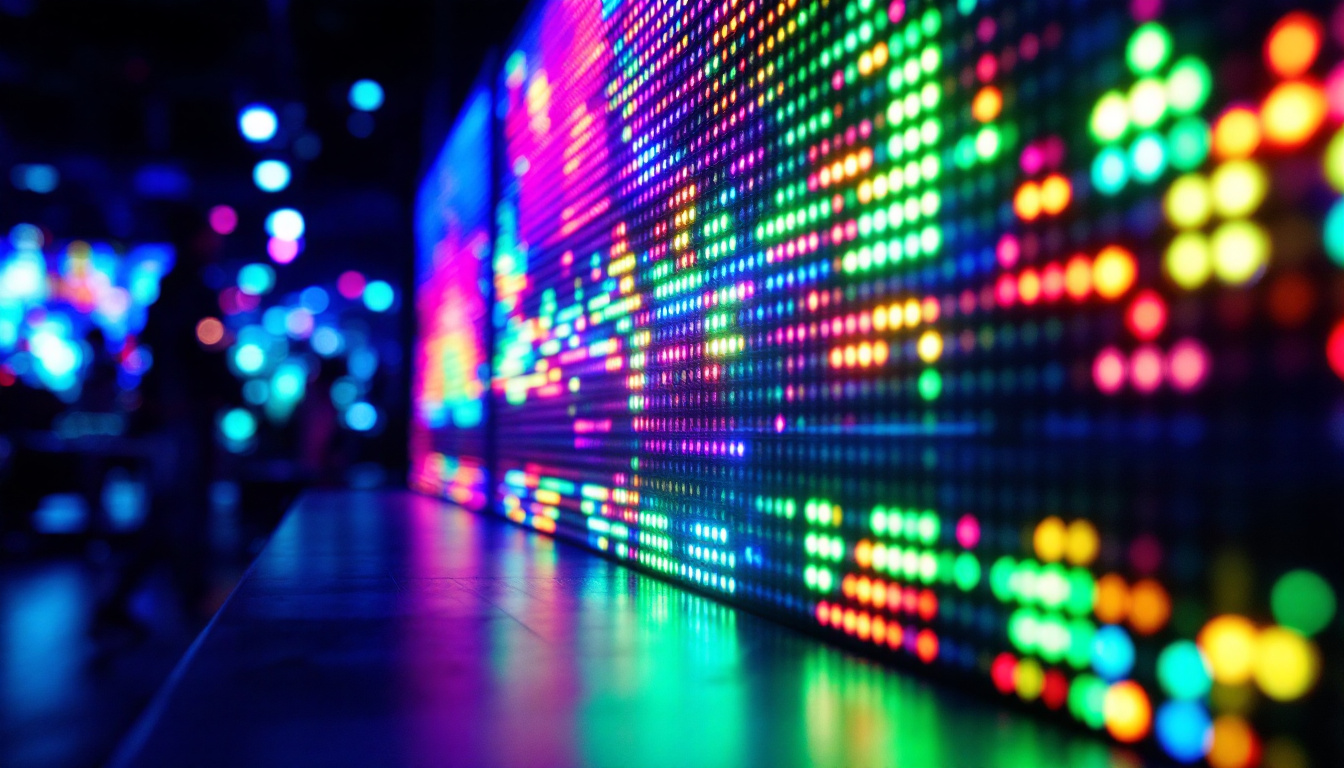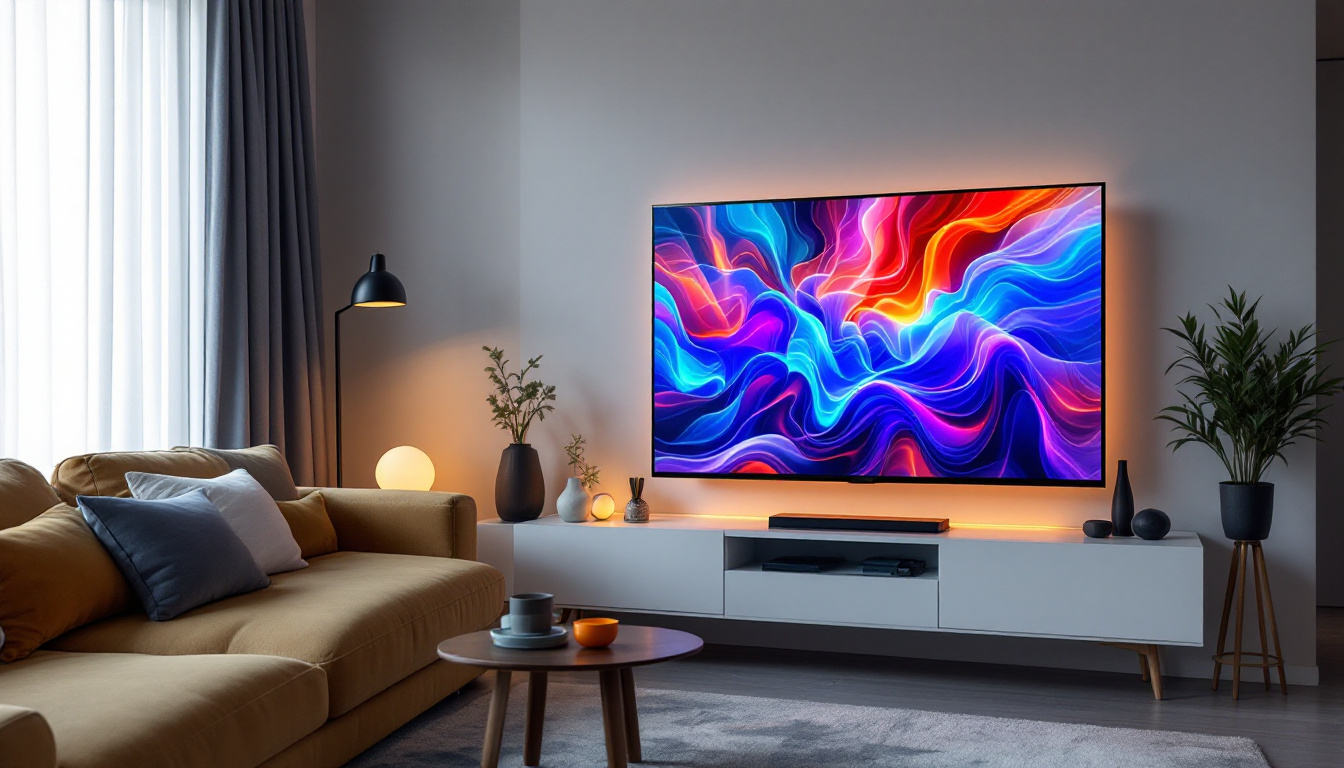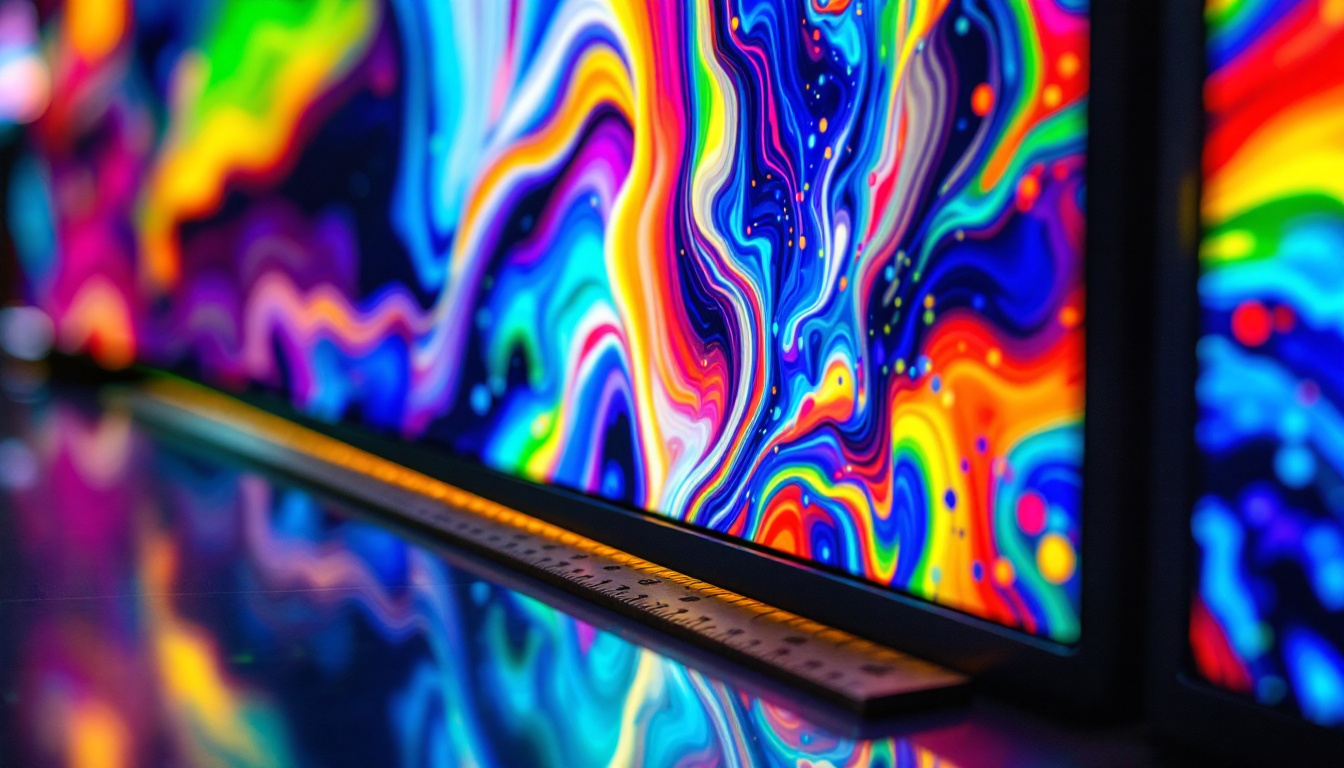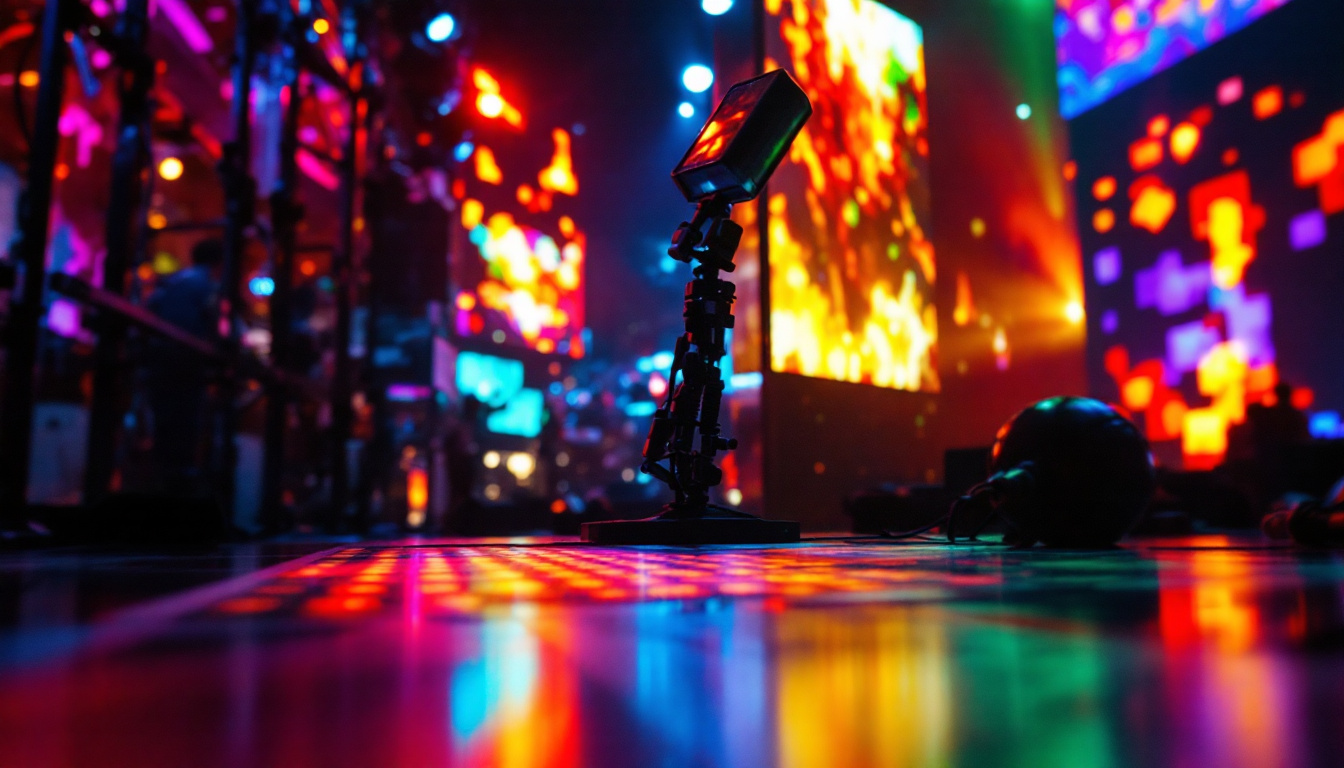Modern TV Walls: LED Display Explained
In recent years, the evolution of television technology has transformed the way we experience visual entertainment. One of the most significant advancements has been the introduction of LED displays, which have become a popular choice for modern TV walls in homes, offices, and public spaces. This article delves into the intricacies of LED displays, their advantages, and how they are revolutionizing the concept of TV walls.
Understanding LED Technology
Light Emitting Diode (LED) technology has gained immense popularity due to its efficiency and versatility. Unlike traditional LCD screens that rely on backlighting, LED displays utilize individual diodes to produce light, resulting in superior image quality and energy efficiency.
How LED Displays Work
At the core of LED technology is the semiconductor that emits light when an electric current passes through it. This allows for vibrant colors and deep contrasts, enhancing the viewing experience. LED displays can be categorized into two main types: direct-lit and edge-lit. Direct-lit displays have LEDs spread across the entire screen, while edge-lit displays have LEDs positioned along the edges, allowing for a slimmer profile.
Moreover, advancements in technology have led to the development of OLED (Organic LED) displays, which offer even greater contrast ratios and color accuracy. OLED screens are made up of organic compounds that emit light, enabling true blacks and a wider color gamut. However, traditional LED displays remain the more common choice for larger installations due to their cost-effectiveness and durability.
Benefits of LED Displays
LED displays offer numerous advantages that make them an ideal choice for modern TV walls. One of the most significant benefits is their energy efficiency. Compared to traditional displays, LED screens consume less power, making them more environmentally friendly and cost-effective in the long run.
Additionally, LED displays are known for their longevity. With a lifespan of up to 100,000 hours, they outlast many other display technologies, reducing the need for frequent replacements. This durability is particularly advantageous for commercial environments where screens are in constant use.
Another compelling benefit of LED technology is its ability to perform well in various lighting conditions. Unlike older display technologies, which can wash out in bright environments, LED screens maintain their brightness and clarity, making them suitable for both indoor and outdoor applications. This adaptability is particularly useful for advertising displays, where visibility is crucial for capturing the attention of passersby. Furthermore, the rapid response time of LED displays minimizes motion blur, making them ideal for fast-paced video content, such as sports or action movies, enhancing the overall viewing experience.
In addition to their technical advantages, LED displays also support a wide range of sizes and configurations, allowing for creative installations that can fit any space. From large-scale video walls in public venues to sleek, minimalist designs in home theaters, the flexibility of LED technology enables designers and consumers alike to create stunning visual experiences tailored to their specific needs. This versatility, combined with the ongoing advancements in LED technology, ensures that it will continue to play a pivotal role in the future of display solutions.
Designing a Modern TV Wall
The design of a modern TV wall can significantly enhance the aesthetic of a space. Whether it’s a cozy living room, a sleek office, or a bustling retail environment, the right design can create an inviting atmosphere.
Choosing the Right Size and Layout
When designing a TV wall, the size of the display is crucial. The size should be proportionate to the room and the distance from which viewers will be watching. A general guideline is to have the viewing distance be approximately 1.5 to 2.5 times the diagonal size of the screen. This ensures an immersive experience without straining the eyes.
Layout also plays a vital role in the overall design. A symmetrical arrangement can create a balanced look, while an asymmetrical setup can add a modern twist. Incorporating additional elements such as shelves for decorative items or sound systems can enhance the functionality and aesthetics of the TV wall. For instance, floating shelves can be used to display books, plants, or personal memorabilia, adding a touch of personality to the space. Moreover, built-in cabinetry can provide storage solutions, keeping the area tidy and organized while complementing the overall design theme.
Integrating Smart Technology
In today’s digital age, integrating smart technology into TV walls has become increasingly popular. Smart TVs equipped with built-in streaming services, voice control, and connectivity options allow for a seamless entertainment experience. Additionally, incorporating smart home systems can enable users to control lighting, sound, and even the display itself through a single interface.
Furthermore, using a multi-screen setup can enhance the viewing experience in commercial spaces. This allows for displaying multiple feeds simultaneously, making it ideal for sports bars, waiting rooms, or retail displays. The flexibility of LED technology makes it possible to create custom configurations tailored to specific needs. For example, a retail environment can use a combination of screens to showcase products, promotions, and interactive content, thereby engaging customers more effectively. Additionally, the integration of augmented reality (AR) features can provide an interactive experience, allowing viewers to engage with the content in innovative ways, transforming the traditional viewing experience into a dynamic and immersive journey.
Installation Considerations
Installing a modern TV wall requires careful planning and execution. Proper installation ensures that the display functions optimally and enhances the overall design of the space.
Wall Mounting vs. Free-Standing Units
One of the first decisions to make is whether to mount the TV wall on the wall or use free-standing units. Wall mounting offers a sleek, space-saving solution that can create a more polished look. However, it is essential to ensure that the wall can support the weight of the display and that all cables are properly concealed for a clean appearance.
On the other hand, free-standing units can provide flexibility, allowing for easy relocation and adjustments. This option is particularly useful in commercial settings where layouts may need to change frequently. Choosing between these options depends on the specific requirements of the space and the desired aesthetic.
Cabling and Connectivity
Another critical aspect of installation is managing cables and ensuring proper connectivity. A cluttered setup can detract from the overall look of the TV wall. Utilizing cable management systems can help conceal unsightly wires and create a clean, professional appearance.
Additionally, ensuring that the display has the necessary ports and connectivity options is crucial for compatibility with various devices. HDMI, USB, and audio outputs should be readily accessible to facilitate easy connections to gaming consoles, streaming devices, and sound systems.
Maintenance and Care
Maintaining a modern TV wall is essential to ensure its longevity and optimal performance. Regular care can prevent issues and keep the display looking its best.
Cleaning and Dusting
Keeping the screen clean is vital for maintaining image quality. Dust and fingerprints can accumulate on the surface, affecting visibility. It is recommended to use a microfiber cloth and a gentle cleaning solution specifically designed for screens. Avoid using harsh chemicals or abrasive materials that could damage the display.
Additionally, dusting the surrounding area regularly can help prevent buildup on the screen. Ensuring proper ventilation around the display is also crucial, as overheating can lead to performance issues.
Software Updates and Calibration
For smart TVs, regular software updates are essential for optimal performance and security. Manufacturers often release updates that enhance functionality and fix bugs. Keeping the software up to date ensures that users can take advantage of the latest features and improvements.
Calibration is another important aspect of maintenance. Adjusting settings such as brightness, contrast, and color balance can significantly enhance the viewing experience. Many modern displays come with built-in calibration tools, but professional calibration services are also available for those seeking the best possible image quality.
Future Trends in TV Wall Technology
The landscape of TV wall technology is continually evolving. As advancements in technology emerge, new trends are shaping the future of display solutions.
MicroLED Technology
One of the most exciting developments is MicroLED technology, which promises to deliver even higher resolution and brightness levels than traditional LED displays. MicroLEDs consist of tiny individual LEDs that can create stunning images with exceptional color accuracy and contrast. This technology allows for modular displays, enabling users to create custom sizes and shapes for their TV walls.
As MicroLED technology becomes more accessible, it is expected to revolutionize the market, offering unparalleled viewing experiences for both residential and commercial applications.
Interactive Displays
Another trend gaining traction is the rise of interactive displays. These screens allow users to engage with content in real-time, making them ideal for educational settings, presentations, and retail environments. Touchscreen capabilities and gesture recognition are becoming more prevalent, enabling a more immersive and interactive experience.
As technology continues to advance, the integration of interactive features into TV walls will become more commonplace, enhancing user engagement and interactivity.
Conclusion
Modern TV walls equipped with LED displays are transforming the way we consume media and interact with our environments. With their energy efficiency, longevity, and superior image quality, LED displays have become the preferred choice for both residential and commercial applications.
As technology continues to evolve, the possibilities for TV walls are expanding. From innovative designs to interactive features, the future of display technology promises to enhance our viewing experiences in ways previously unimaginable. Whether for entertainment, business, or education, modern TV walls are set to play a pivotal role in shaping how we connect with visual content.
Discover LumenMatrix LED Display Solutions
Ready to elevate your space with the latest in LED display technology? LumenMatrix is at the forefront of creating immersive environments through innovative LED solutions. Whether you’re looking to transform your home entertainment system, captivate customers in a commercial setting, or engage audiences in educational venues, our range of products, including Indoor and Outdoor LED Wall Displays, Vehicle LED Displays, and more, are designed to deliver unparalleled visual experiences. Experience the future of visual communication today and check out LumenMatrix LED Display Solutions to see how we can help you make a lasting impression.

